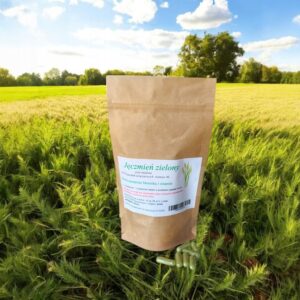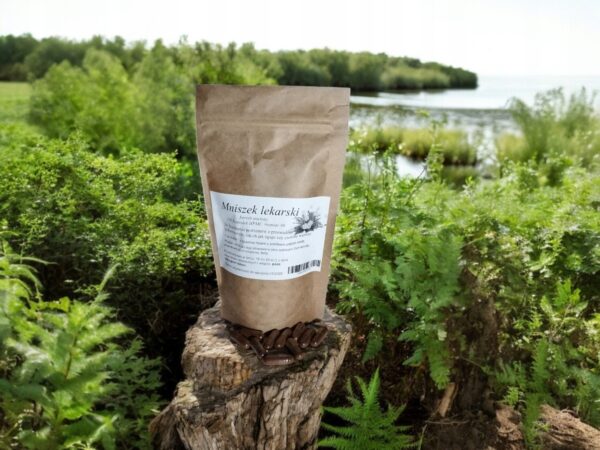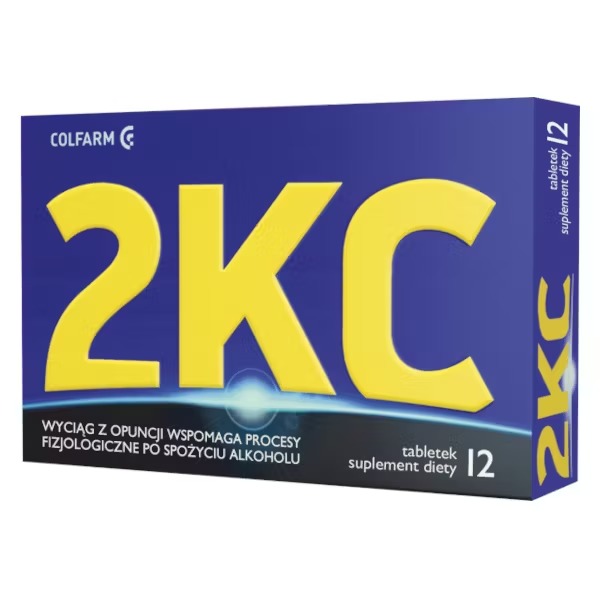Contents : 100 gelatin capsules
- Directions for use: 1 capsule once a day. Swallow the capsule and drink plenty of water during a meal, do not exceed the dose.
- Storage conditions: Store in a dry, dark place out of reach of children.
- NOTES: Do not exceed the recommended daily dose. Not for use by pregnant or lactating women or children under 12 years of age.
- The product cannot be used as a substitute for a properly varied diet.
Dandelion – use and indications
Dandelion is currently used as a digestive aid, liver function, and gallbladder function . Bitter substances (giving the herb a bitter taste) present in dandelion root extracts and juice alleviate indigestion, improve the digestion process of heavy meals, and stimulate appetite .
Dandelion extracts can also be used to help alleviate swelling associated with kidney failure, as well as to reduce symptoms associated with diabetes and progressive joint degeneration. Dandelion extracts are increasingly used as preparations that reduce plasma cholesterol levels – they reduce LDL and vLDL levels in the blood, and increase HDL levels, called “good” cholesterol.
In recent years, the anti-cancer properties of dandelion have also been studied, as water extracts from its flowers have previously been used as an aid in some breast and prostate cancers. However, it should always be remembered that the treatment process of any cancer disease should be completely under the supervision of a doctor, and herbs can only play a supporting role in the basic therapy.
Dandelion is a plant that has long been used in herbal medicine. An extract of the root or herb of dandelion was used by the ancient Persian physician Avicenna. The oldest legends about dandelion say that the plant came to earth with man, who replaced magical creatures in the world, such as elves and mermaids. However, some of the mythical creatures loved the rays of the sun so much that they hid on the surface of the earth in the form of yellow dandelion flowers.
In our native folk tales, however, we can come across the story of the nobleman Rosolski. He was a man who, having married a supposedly not very beautiful noblewoman, often cheated on her and sought the attention of younger women. From the further story of Rosolski, we can conclude that the unfaithful man of a certain age encountered difficulties of a love nature – to the joy of his wife. However, he was freed from oppression by preparations prescribed by a local healer, among which was an extract from dandelion root. According to the story, the desperate wife’s struggle with the common occurrence of dandelion in those areas only brought him popularity, thanks to which every man in the area knew about the supposed stimulating properties of the plant. To this day, it is believed that dandelion helps to improve libido.
Folk medicine has eagerly drawn on the health-promoting properties of dandelion, which is also referred to as lion’s tooth, male constancy, goiter or sore eyes, milkweed, dandelion, milkweed, milkweed, milkweed, wolf’s tooth or pig’s milkweed. Preserves and raw parts of the plant were used as remedies in the fight against skin lesions, such as warts and verrucas. Dandelion extract was also used as a preparation to reduce discoloration and
acne
. In Chinese folk medicine, dandelion extracts are often used as a remedy.
increasing the activity of the immune system
during mild infections.
Dandelion is also very popular in the cuisine of the United States and Western Europe. In America, dandelion roots are used to make coffee and tea substitutes. In France, the plant is often used as an addition to salads and sauces.
Dandelion (milkweed, dandelion) — appearance, origin, morphology
Dandelion (Latin Taraxacum officinale, English Dandelion), commonly called milkweed, is a small perennial plant from the aster family – Asteraceae. Dandelion occurs commonly in almost all of Europe. In Poland, the plant is considered a difficult to eradicate weed, which can often be found in parks, on lawns, old buildings and pastures. A meadow full of yellow dandelion flowers is associated with spring. The name dandelion probably comes from the medieval phrase caput monachi, meaning a monk’s head, which medieval Europeans associated with the image of a dandelion flower basket devoid of fluff.
Virtually every child in Poland will recognize a dandelion by its characteristic fruit, the so-called dandelions. The fruit of a dandelion is a small achene surrounded by down that facilitates the dispersal of seeds. In turn, every adult will probably confuse a dandelion with the common milkweed in Poland – Sonchus arvensis, which is clearly distinguished from a dandelion by its single stem.
The lanceolate, coarsely, laterally serrated leaves of the dandelion are gathered in a rosette. It grows from a vertical, cylindrical, fleshy root . In early spring, shoots grow from the rosette, on which flower baskets are located , consisting exclusively of intensely yellow ligulate flowers. The dandelion blooms from April to July, although it sometimes blooms again in autumn. The entire plant contains a milky sap that stains the skin, but also destroys warts and verrucas.
The plant has extraordinary healing properties, and the herbal raw material is dandelion root – Taraxaci radix – or dandelion herb with root – Taraxaci radix cum herba. The raw materials are collected in late autumn and dried at an appropriate temperature.
Dandelion – medicinal properties, composition, action
The medicinal properties of dandelion are due to a group of phenolic acids, which include monocaffeoyltartaric acid, chlorogenic acid and chicory acid. In addition, sesquiterpene lactones present in the extracts are also important for the action of the raw material. Dandelion root is also a good source of mineral salts, inulin and phytosterols and triterpenes. Other substances found in extracts from the root, flowers or leaves also include β-amyrin, taraxerol, stigmasterine and vitamin A, the concentration of which is very high.
Phenolic acids present in the extracts increase the production and flow of bile (reducing its stasis) to the initial sections of the digestive tract, thus facilitating the digestion of fats . Sesquiterpene lactones irritate the nerve endings on the surface of the tongue, which is responsible for increasing the production of saliva, which reflexively stimulates the gastric mucosa to release more stomach acids and enhances digestion. Inulin found in the roots can improve intestinal transit , reduce cholesterol levels and have a slight antidiabetic effect . It can support weight loss . It has a low glycemic index, does not increase blood sugar levels, is a prebiotic.
Dandelion, through its antioxidant potential, has a protective effect on the liver and reduces the negative impact of free radicals on the skin, slowing down aging. It also has a cleansing, diuretic effect, and accelerates healing processes. Treatment of diseases and convalescence after them are much easier thanks to dandelion.
The anti-inflammatory effects of dandelion allow the use of extracts from this plant in soothing acne lesions . In addition, animal studies have confirmed that dandelion extracts limit the development of inflammation in the case of acute pneumonia and tracheitis, as well as pancreatitis. Substances contained in dandelion extracts reduced the level of interleukin 6 and the concentration of tumor necrosis factor – TNF-α.
It is also being studied whether dandelion has antibacterial properties. The bactericidal effect is probably due to saponins, tannins, phytosterols and triterpenes present in the extracts. The extracts inhibited the growth of Enterococcus faecalis, Escherichia coli, Staphylococcus aureus, as well as Salmonella typhi and Bacillus cereus.
Dandelion – contraindications and interactions
Due to the action profile of dandelion, caution should be exercised when using it in diabetics, people treated with diuretics, anticoagulants and gastric acid neutralizing drugs.
People suffering from biliary tract diseases, gallstones, stomach and duodenal ulcers, severe kidney diseases and electrolyte disorders should avoid using dandelion without consulting a doctor.
Dandelion – side effects, overdose
When using extracts and preparations containing dandelion, there is a possibility of allergic reaction symptoms, which include hives, eczema and skin redness. During long-term use, cases of digestive disorders have also been reported.
The use of dandelion and its products is contraindicated during pregnancy and breastfeeding.






































Reviews
Clear filtersThere are no reviews yet.